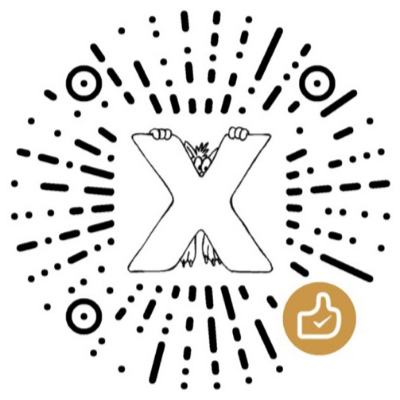In the field of psychometrics, a person’s moral level is also an important dimension of psychological testing. The American psychologists who made outstanding contributions in this regard are undoubtedly the American psychologists Kohlberg and Piaget. This person used the dilemma method to test moral psychology and divided the results into three Stages respectively represent a person’s moral level. Moral level is also called moral level. It refers to a person’s moral character, character, and the extent to which social morality restricts personal words and deeds. Someone’s moral level is the extent to which someone’s words and deeds are constrained by social morality. Morality is a social consciousness, a code of conduct and norms that people follow when living together. It is a standard principle or code of conduct that is followed in accordance with moral principles. A code that conforms to moral principles is good, and a code that violates moral principles is evil. There is no contradiction in morality itself, and the executor will have consequences when executing the code in accordance with moral principles. conflict. The British educator Kohlberg divided the moral level into three levels and six stages: 1. Pre-conventional level: (1) Punishment and obedience moral orientation stage: obeying authority or rules just to avoid punishment. This is an orientation toward obedience to authority or a powerful person, usually a parent, in order to avoid punishment. The morality of an action is determined by its physical consequences. (2) Relative utilitarian moral orientation stage: whether it is in line with one’s own interests. At this stage children obey to receive rewards. Although there is some sharing of rewards, it is done with a purpose and self-service, rather than justice, generosity, compassion or mercy in the true sense. 2. Custom level: (1) Approval-seeking orientation stage, also known as the “good boy” orientation stage: conform to everyone’s opinions and seek everyone’s appreciation and recognition. At this stage, behaviors that gain praise and maintain good relationships with others are good. Although children still base their judgments on right and wrong based on the reactions of others, they are now more concerned with the praise and criticism of others than with the physical strength of others. (2) The moral orientation stage of maintaining authority or order: respecting the authority of the law and acting in accordance with authority and relevant norms. This stage blindly accepts social customs and rules and believes that as long as they accept these social rules they will be immune to criticism. They no longer just adhere to the standards of other individuals but to the social order. 3. Post-conventional level: (1) Social contract orientation stage: Contract and legal provisions are not absolute and can be changed at the request of most people. The basis of morality is the consensus to maintain social order. Because it is a social contract, it can also be revised when people in the society find alternatives that meet the interests of more members of the group through rational discussions. (2) The moral orientation stage of universal principles, also called the principle or conscience orientation stage: as long as the motivation is good, the behavior is correct, and universal human morality is above all else. In order to avoid self-blame rather than criticism from others, individuals at this stage follow both social standards and internalized ideals. People who reach this level will have highly individualized moral beliefs that sometimes conflict with the social order accepted by most people. Kohlberg believes that children aged 0 to 9 are generally at the first level, children between 9 and 15 are at the second level, and develop to the third level after the age of 16. In this way, there is a measure of moral level. In Kohlberg’s system, children at the second level are more inclined to universal norms and customary morality, and customary morality has limitations, especially in some cases. In moral dilemmas, adults tend to choose the moral bottom line or principle of their own choice, while minors aged 9 to 15 are more inclined to standard secular templates. In this way, we can, in a sense, be at the customary level. People at the post-conventional level are more moral than people at the post-conventional level, but this concept is not comprehensive and may even be biased. Because moral sense is not the literal meaning of common understanding. So, where is your moral level? Let’s test it out.
What stage is your moral level at?
💙
💚
💛
❤️
If the website is helpful to you and qualified friends are willing to reward you, you can click the reward button below to sponsor this website. Appreciation funds will be used for fixed expenses such as servers and domain names. We will regularly update your appreciation to the appreciation record. You can also help us survive as a free way by clicking on ads on the webpage, so that we can continue to create more high-quality content! You are welcome to share and recommend the website to your friends so that more people can benefit. Thank you for your contribution to this website, thank you all!
Previous: Test your charm color?
I want to leave a message
Relevant test recommendations
- See how ambitious you are?
- International Standard Bisexual Orientation Test for Your Sexual Orientation
- creativity test
- Psychological Test: Test your stress level
- Are you sexually healthy?
- Test how you socialize in life
- Test your tactfulness in dealing with things
- Test your workplace literacy by eating an apple
- Straight female level identification test
- Straight male level identification test
Related reading recommendations
- Seven questions to reveal whether you have paranoid personality disorder, come and get tested!
- Are compulsions bothering you? Come check out these solutions!
- Stereotypes: How your brain tricks you
- Why does studying psychology destroy the three views? Because it allows you to discover these amazing truths!
- Depression is not just a bad mood, it is a health killer in the 21st century! Take a 3-minute self-test to see if you have symptoms of depression
- Why do we hate people who do the right thing? The psychology behind do-gooder derogation
- Self-efficacy: How confident are you?
- Explore B.D.S.M culture: the wonderful world of role play and sex toys
- Emotion management, do you know it? After reading this article, you are a master!
- What is postpartum depression? You must understand these knowledge points!
Latest psychological tests
Testing today
Character/Personality
MBTI professional personality free online test | official 93-question standard version
Love/Relationship
Heartbeat Signal ABM Love Version MBTI, test your love animal personality? (PsycTest version)

